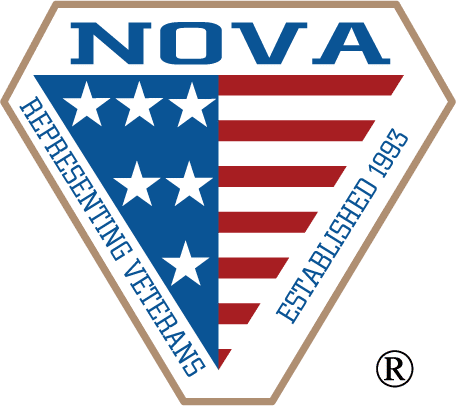Additional Consultation Information
Thank you for contacting Perkins Studdard LLC with questions about your VA claim.
So that we can provide you with the best consultation process possible, we would like to find out a little bit more so that we can better assess your situation. Please complete the form below that most accurately applies to your situation. Once you complete the form, please click the “Submit” button. Once the form has been submitted successfully, we will review the form and contact you via email if we have follow up questions or need to see any documentation:
For veterans pursuing disability compensation benefits
For family members pursuing dependency and indemnity compensation (DIC) benefits
If you have any difficulty opening or completing the form, please call (770-214-8885) and ask for Melissa or e-mail her at melissa@perkins-studdard.com. She will be happy to help you with the form if you are having trouble.
If you have received any of the following documents from VA or if your appeal deadline is in the next 60 days, please inform us immediately and send copies to melissa@perkins-studdard.com or fax copies to (770) 731-8184:
- Statement of the Case (This document will have a box at the top labeling it as a Statement of the Case, it is the document you will generally receive in response to the filing of a Notice of Disagreement)
- Board of Veterans Appeals 90 Day Letter (letter stating that your case is being put on the docket for decision and that you have 90 days to send any other evidence to be considered)
- Board of Veterans Appeals Hearing Letter (letter stating a date for your hearing or letter informing you of their decision)
Please understand that you do not yet have an attorney-client relationship with our firm. The only way we become your attorney is by you signing an attorney fee contract and other necessary forms. Unless and until we become your attorney, you are responsible for filing any necessary paperwork with the Department of Veterans Affairs or courts of appeal. We will not be filing anything on your behalf based on your inquiry to us. Be sure you verify with VA what the deadlines are in your claim. If you miss those deadlines, you may not be able to pursue an appeal.-
Questions about Veterans Benefits
You can now apply online https://www.ebenefits.va.gov/ebenefits-portal/ebenefits.portal. The VA recommends this option as an easy way to submit and track your claim. Alternatively, you can visit a VA Regional Office where staff can assist you. Be sure to bring with you any supporting evidence for your claim to avoid any unnecessary delay. You can also complete the application yourself and mail it in to your nearest VA Regional Office.
Each type of VA benefit has its own VA form to be used to apply. You can search and print these from the VA website https://www.va.gov/vaforms/ or call your nearest VA Regional Office and they can mail the forms to you.
Supporting evidence will of course vary depending on the type of benefit for which you are applying. Generally, though, you will at least need:
- Discharge or separation papers (DD214 or equivalent)
- Service Treatment Records if they are in your possession
- Medical evidence (doctor & hospital reports)
- Dependency records (marriage and/or children’s birth certificate) if applying for dependency benefits
Generally, there is no statute of limitations or other deadline to file a claim for benefits. However, you are only eligible for benefits from the “effective date,” which is the date the VA receives the claim. This is important because it limits how much in retroactive benefits a veteran or dependent can receive; the longer you wait to apply, the more retroactive benefits you are potentially losing.
You must file a Notice of Disagreement (NOD) with the VA letting them know that you dispute the decision they reached on all or part of your claim. You have up to a year from the date of the VA’s decision, but it is recommended that you file this as soon as possible to eliminate any unnecessary delay in the appeal of your claim. Once this Notice of Disagreement is filed, Perkins Studdard, LLP may be able to represent you in correcting the errors made in the initial decision so you get the VA benefits you deserve.
Many veterans receive a decision approving them for benefits on only some of their claimed disabilities, or they receive a disability rating at a lower percentage than they feel is appropriate. Even if you “won” on some of the issues, you can still file a Notice of Disagreement (NOD) on the other issues or the amount of the disability rating for those deemed service-connected. There are other possible errors lurking in the decision, such as a later effective date, meaning you will not receive all the retroactive benefits to which you are entitled. Perkins Studdard, LLP is here to review those issues with you.
No. We handle veterans’ disability and pension claims with no up front cost. Your consultation is free and you only pay us if we recover something for you. Perkins Studdard, LLP charges a contingency fee in veterans’ claims, meaning we work for a percentage of what we recover for you from the VA.
“Aid and Attendance” benefits provide additional monthly benefits to a qualifying veteran or spouse who is housebound, in a nursing home, or requires the assistance of another. Aid and Attendance can be in the form of either Special Monthly Compensation (SMC) for those receiving compensation for service-connected disabilities or Special Monthly Pension (SMP) for wartime veterans and their spouses who are totally disabled. These benefits are paid in addition to the underlying compensation or pension and can be a tremendous help to veterans and their dependents later in life.
If your disease is on the list of diseases considered to be the result of Agent Orange, then you likely can receive monthly disability compensation. Or, if you are the dependent of a veteran who dies as the result of one of these diseases, you may be entitled to Dependency and Indemnity Compensation (DIC). The following is the current list of diseases presumed to be caused by Agent Orange exposure (38 C.F.R. § 3.309(e)):
- AL amyloidosis
- Chloracne or other acneform disease consistent with chloracne
- Type 2 diabetes (also known as Type II diabetes mellitus or adult-onset diabetes)
- Hodgkin’s disease
- Ischemic heart disease (including, but not limited to, acute, subacute, and old myocardial infarction; atherosclerotic cardiovascular disease including coronary artery disease (including coronary spasm) and coronary bypass surgery; and stable, unstable and Prinzmetal’s angina)NOTE : For purposes of this section, the term ischemic heart disease does not include hypertension or peripheral manifestations of arteriosclerosis such as peripheral vascular disease or stroke, or any other condition that does not qualify within the generally accepted medical definition of Ischemic heart disease.
- All chronic B-cell leukemias (including, but not limited to, hairy-cell leukemia and chronic lymphocytic leukemia)
- Multiple myeloma
- Non-Hodgkin’s lymphoma
- Parkinson’s disease
- Acute and subacute peripheral neuropathy –NOTE : For purposes of this section, the term acute and subacute peripheral neuropathy means transient peripheral neuropathy that appears within weeks or months of exposure to an herbicide agent and resolves within two years of the date of onset. This is a very difficult requirement for any veteran to meet.
- Porphyria cutanea tarda
- Prostate cancer
- Respiratory cancers (cancer of the lung, bronchus, larynx, or trachea)
- Soft-tissue sarcoma (other than osteosarcoma, chondrosarcoma, Kaposi’s sarcoma, or mesothelioma)NOTE : The term “soft-tissue sarcoma” includes the following:Adult fibrosarcoma
- Dermatofibrosarcoma protuberans
- Malignant fibrous histiocytoma
- Liposarcoma
- Leiomyosarcoma
- Epithelioid leiomyosarcoma (malignant leiomyoblastoma)
- Rhabdomyosarcoma
- Ectomesenchymoma
- Angiosarcoma (hemangiosarcoma and lymphangiosarcoma)
- Proliferating (systemic) angioendotheliomatosis
- Malignant glomus tumor
- Malignant hemangiopericytoma
- Synovial sarcoma (malignant synovioma)
- Malignant giant cell tumor of tendon sheath
- Malignant schwannoma, including malignant schwannoma with rhabdomyoblastic differentiation (malignant Triton tumor), glandular and epithelioid malignant schwannomas
- Malignant mesenchymoma
- Malignant granular cell tumor
- Alveolar soft part sarcoma
- Epithelioid sarcoma
- Clear cell sarcoma of tendons and aponeuroses
- Extraskeletal Ewing’s sarcoma
- Congenital and infantile fibrosarcoma
- Malignant ganglioneuroma











